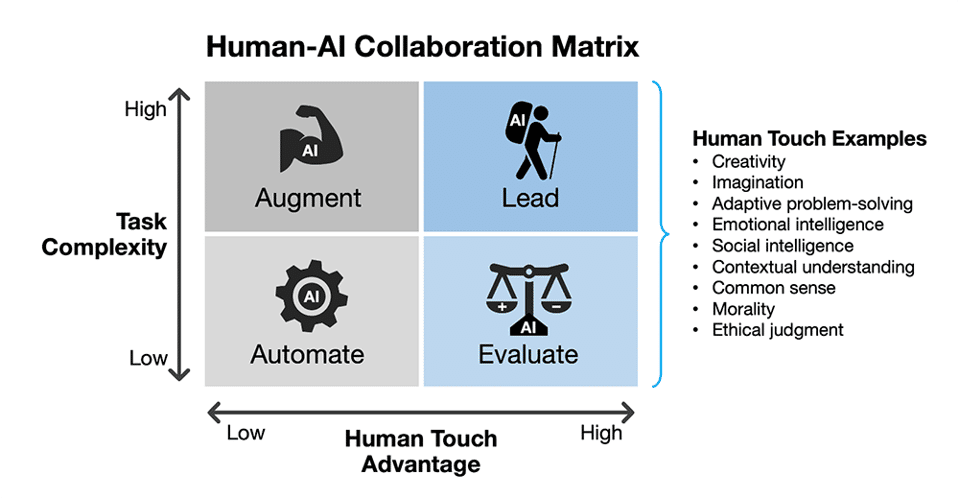The Workplace Divide
As artificial intelligence becomes more embedded in workplaces, it ignites a mix of enthusiasm and unease. In executive suites, the optimism is palpable— according to BCG’s AI Radar report, three out of four business leaders see Human-AI partnership as a crucial strategic priority, according to recent studies. Yet, the enthusiasm hasn’t fully translated into tangible value, with only a quarter reporting significant benefits. Meanwhile, among employees, skepticism lingers. Pew Research study found that half worry about AI’s long-term impact on job security, and nearly a third believe it could shrink opportunities rather than expand them.
The reality, however, is more nuanced. Many executives envision AI as a collaborative tool rather than a replacement. The majority expect humans and AI to work in tandem, and only a small fraction predict AI will take over the primary role. Most organizations are investing in upskilling their workforce rather than reducing headcount, suggesting a future where AI enhances rather than eliminates human jobs.
Despite these aspirations, AI adoption in daily work remains uneven. While corporate leaders push for increased AI integration, most employees report minimal exposure to these technologies in their tasks. The skills gap is also apparent: while abilities like communication and critical thinking rank high in importance, proficiency in AI tools still trails far behind. Until organizations bridge this divide through training and real-world application, the promise of human-AI collaboration will remain just that—a promise.
Task-Centered Collaboration
To understand how humans and AI can work effectively together, it helps to recognize their respective strengths. AI excels in processing vast amounts of data, identifying patterns, and maintaining consistency. It operates without fatigue and can scale efficiently. Humans, on the other hand, bring creativity, adaptability, emotional intelligence, and ethical judgment—qualities that AI struggles to replicate.
Rather than viewing AI through a binary lens of automation versus human control, a more refined framework distinguishes four types of collaboration:
- Automate (Low complexity, low human touch advantage)
- Tasks that are repetitive and rules-based, where AI’s efficiency is unmatched.
- Augment (High complexity, low human touch advantage)
- AI enhances human decision-making in complex tasks, such as financial modeling or medical diagnostics.
- Evaluate (Low complexity, high human touch advantage)
- Simple tasks that require human judgment, like ethical decision-making or nuanced customer interactions.
- Lead (High complexity, high human touch advantage)
- Strategic decision-making, creativity, and problem-solving, where humans take the lead and AI serves as an assistive tool.
Image source: Forbes
This structured approach helps organizations allocate resources effectively, ensuring AI is deployed where it adds the most value without diminishing human contributions.
The Limits and Opportunities of Collaboration
Recent research published in the journal Nature Human Behaviour suggests that human-AI collaboration does not always outperform either party working alone. A review of over 100 studies found that, on average, human-AI teams performed worse than the best AI-only or human-only systems in many cases. For instance, AI alone proved most effective at identifying fake reviews, while human intervention actually lowered accuracy. This suggests that successful collaboration depends on understanding when and how to integrate AI into workflows.
One area where human-AI synergy has shown promise is content creation. Generative AI, for example, allows for an iterative creative process, where humans refine and direct AI-generated outputs. In fields like design and writing, this cycle of drafting, editing, and reworking has led to more innovative results than either AI or humans could produce alone.
A More Sophisticated Approach
Rather than rushing to integrate AI into every aspect of work, organizations should take a more measured approach. Understanding when AI should automate, augment, evaluate, or support human leadership is critical to maximizing its benefits. Investing in AI literacy, refining human-AI workflows, and acknowledging the strengths of both parties will be essential for long-term success.
AI is neither a panacea nor an existential threat—it is a tool. And like any tool, its value depends on how we use it.

